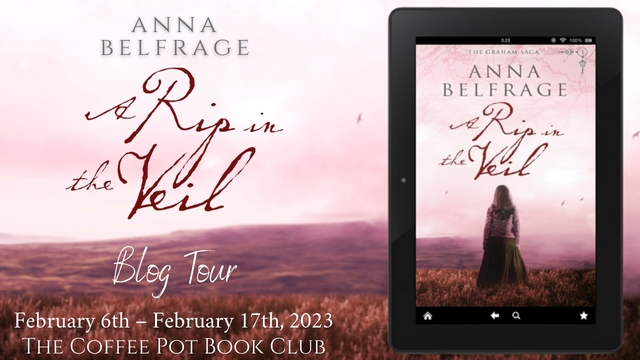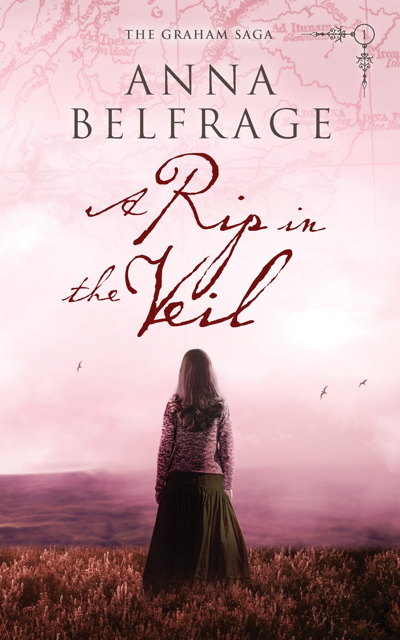
On a muggy August day in 2002 Alex Lind disappears. On an equally stifling August day in 1658, Matthew Graham finds her on a Scottish moor. Life will never be the same for Alex – or for Matthew.
Alexandra Lind is thrown three centuries backwards in time to land at the feet of escaped convict Matthew Graham.
Matthew doesn’t know what to make of this strange woman who has seemingly fallen from the skies—what is she, a witch?
Alex is convinced the tall, gaunt man is some sort of hermit, an oddball, but she quickly realises the odd one out is she, not he.
Catapulted from a life of modern comfort, Alex grapples with her new existence, further complicated by the dawning realization that someone from her time has followed her here—and not exactly to extend a helping hand.
Potential compensation for this brutal shift in fate comes in the shape of Matthew, a man she should never have met, not when she was born three centuries after him. But Matthew comes with baggage of his own and on occasion his past threatens them both. At times Alex finds it all excessively exciting, longing for the structured life she used to have.
How will she ever get back? And more importantly, does she really want to?

The History behind A Rip in the Veil
I have always found the period of almost ten years when England, Scotland and Ireland were ruled by Cromwell fascinating. Initially, this fascination sprang from the idea of Roundheads and Cavaliers charging each other in honourable but bloody battles, but over the years it is the underlying ideas, the concept of free men ruling themselves under the Argus eye of a stern God that has permanently hooked my interest. Somehow, our modern democracies stem from these ideas.
“Minus the God part,” Alex says, and beside her, Matthew Graham rolls his eyes. He is a product of a time and age where faith was as much a part of you as your arms. Alex, not so much, having been born in 1976 and raised in a very agnostic environment. Obviously, there are moments when my protagonists of A Rip in the Veil don’t see eye to eye on the thorny issue of religion and faith. . .
The seventeenth century as a whole is a time very much defined by religion. The Thirty Year War was fought due to religious issues (although, despite being Swedish and rather enamoured of King Gustavus Adolphus, I suspect the amassing of riches played a major part as a driving force), people gladly died for their beliefs, were persecuted for reasons we today can’t fully comprehend. Being a Quaker was dangerous, being a Lollard was dangerous, being a Catholic priest in England was extremely dangerous, being a Protestant spy in Spain could end at the stake. Phew.
While there is a lot I admire about Oliver Cromwell, I think it is important to note that he alienated many of his more faithful and level-headed comrades in arms when he had Charles I executed. Regicide in the seventeenth century was a big thing, and as a consequence of this act and the Civil War, very many of England’s and Scotland’s more able men fled abroad, leaving the country in the hands of a God-fearing and rather brutal government. Nor did it help when Cromwell decided to do without the Parliament, thereby effectively becoming a dictator. After all, power always corrupts.
“He did as well as he could,” Matthew protests, but when Alex asks him if he agrees with the enslavement of the Irish, thousands upon thousands sent overseas to slave in the West Indies and all on account of being Catholic, he squirms. “Nay,” he mutters. “Nor was it right to slaughter the Catholics after Philiphaug.”
Too right. Philiphaug was a battle fought in 1645 between the royalists led by the Marquis of Montrose and the Scottish Covenant Army, led by David Leslie. Montrose lost, and the Covenanter Army did not exactly cover itself in glory when it massacred well over 300 people, both soldiers who’d surrendered, but mainly women and children who followed the army. Many of these were Irish and therefore, per definition, evil papists.
“Horrible,” Matthew says. “I was but fifteen, and. . .” He shakes his head. “So wrong. God would never condone such.” And yet it was the Presbyterian ministers who pushed Leslie into killing all those innocents.
The Scottish Covenanter Army fought the right to hold to their Kirk, a kirk that recognised no sovereign power but that of God. Which was why the Scottish Army joined forces with the English Parliamentarians against Charles I. At the time, the Scottish Army was an elite force, lead by battle-hardened men who’d learnt the art of modern warfare from King Gustavus Adolphus, men like David Leslie. Other than fighting for the Kirk, the Scottish Army also fought for Scotland as an independent state, and when Charles I was beheaded, sending waves of shock through the Scottish aristocracy, the Scottish Lords decided to crown Charles II as their king, thereby rupturing the alliance with Cromwell. Which was why, in the early 1650s Cromwell had to ride out in force and crush these Scottish upstarts, now with his own remodelled army at his heels.
The turmoil of the English Civil War shaped Matthew Graham. Raised a Covenanter by his devout father, having spent years fighting for the Puritan army, he was a man of very strong beliefs, a proud member of the Scottish Kirk and a man with little respect for kings and such. No wonder he felt betrayed by everyone when they believed his brother’s ludicrous accusations, painting Matthew as a traitor, a secret royalist.
“It was him, not me, who fought for Charles,” he says. “Him, not me, who rode with the royalists to Worcester. Him, not me, and yet. . .” He knots his hands, and Alex scoots closer and covers them with her own.
“It is over,” she says softly.
“Over?” he laughs. “Over? Three years in a godforsaken gaol leaves you scarred for life.”
Unfortunately for Matthew and others like him, in 1660 Charles Stuart was restored. Suddenly, all the ideals of the Commonwealth were dead, ground to dust under the feet of the triumphant royalists. For the people in Lowland Scotland, the Restoration was a potential issue. It was the Covenanters who had captured Charles I all those years ago and handed him over to Cromwell, it was Covenanter beliefs that had influenced the politics of the Commonwealth, and there was general unrest in the area – in particular as it was well known Charles II had no regard whatsoever for the Scottish Kirk. The religious strife that was unleashed as a consequence of the Restoration is the theme of the third book in the series, The Prodigal Son.
But for now, those events lie in the future. For now, Matthew and Alex can concentrate on each other and their home, the little manor Hillview. Let’s just say they need the rest before things kick off in the next book.
This title is available to read on #KindleUnlimited.
Universal Link: http://myBook.to/ARIV1
Amazon UK: https://www.amazon.co.uk/dp/B071VP9V5F
Amazon US: https://www.amazon.com/dp/B071VP9V5F
Amazon CA: https://www.amazon.ca/dp/B071VP9V5F
Amazon AU: https://www.amazon.com.au/dp/B071VP9V5F
Meet Anna Belfrage

Had Anna been allowed to choose, she’d have become a time-traveller. As this was impossible, she became a financial professional with two absorbing interests: history and writing. Anna has authored the acclaimed time travelling series The Graham Saga, set in 17th century Scotland and Maryland, as well as the equally acclaimed medieval series The King’s Greatest Enemy which is set in 14th century England.
Anna has also published The Wanderer, a fast-paced contemporary romantic suspense trilogy with paranormal and time-slip ingredients.
Her Castilian Heart is the third in her “Castilian” series, a stand-alone sequel to her September 2020 release, His Castilian Hawk. Set against the complications of Edward I’s invasion of Wales, His Castilian Hawk is a story of loyalty, integrity—and love. In the second instalment, The Castilian Pomegranate, we travel with the protagonists to the complex political world of medieval Spain. This latest release finds our protagonists back in England—not necessarily any safer than the wilds of Spain!
All of Anna’s books have been awarded the IndieBRAG Medallion, she has several Historical Novel Society Editor’s Choices, and one of her books won the HNS Indie Award in 2015. She is also the proud recipient of various Reader’s Favorite medals as well as having won various Gold, Silver and Bronze Coffee Pot Book Club awards.
Connect with Anna
Website: www.annabelfrage.com
Twitter: https://twitter.com/abelfrageauthor
Facebook: https://www.facebook.com/annabelfrageauthor
Instagram: https://instagram.com/annabelfrageauthor
Book Bub: https://www.bookbub.com/profile/anna-belfrage
Amazon Author Page: http://Author.to/ABG
Goodreads: https://www.goodreads.com/author/show/6449528.Anna_Belfrage
Thanks so much for hosting Anna Belfrage today, Mercedes. A fascinating post. xx